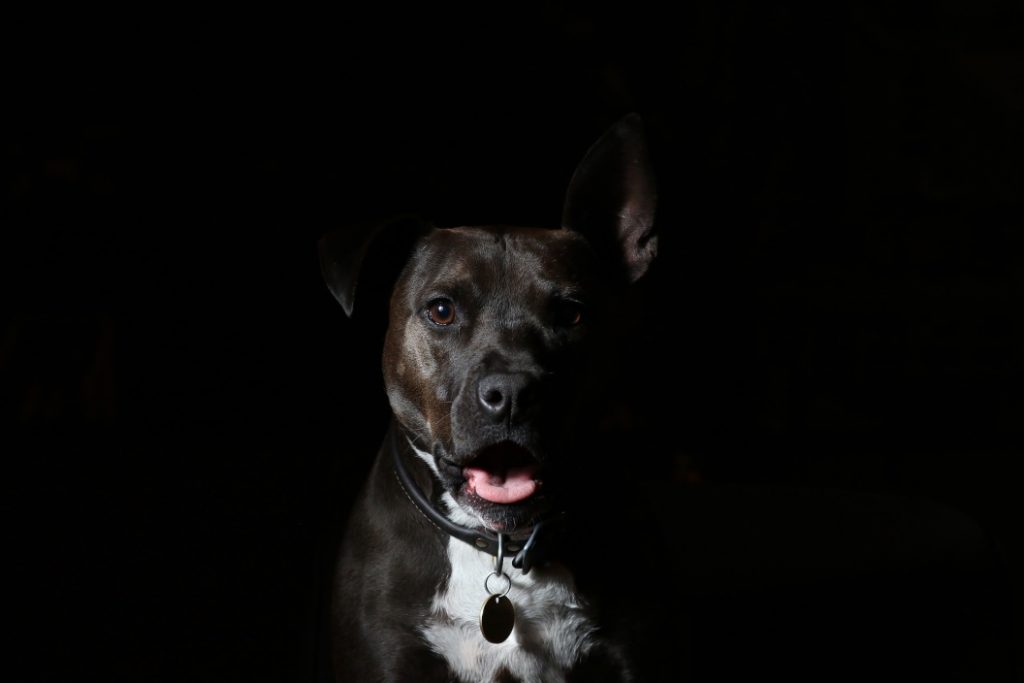This post may contain affiliate links. You can view our affiliate disclosure here.

Some dogs can develop an annoying habit of chasing shadows.
Often, the dog is just finding ways to amuse itself out of boredom. It therefore invents a game that both keeps it amused and works off excess energy.
When this new behaviour is noticed by the owner, he or she might find it funny and not feel like anything needs to be done about it. However, after some time, it can evolve into a bigger problem that is much harder to deal with.
Like most bad habits with dogs, it is essential to nip it in the bud before it becomes an established behavior. This article will go over the reasons why your dog chases shadows and provide strategies for fixing it.
Why Your Dog Chases Shadows
Chasing shadows may have a deep-seated cause and could be a symptom of something more serious with your dog.
It could well be a sign of stress. In most cases, the chasing of shadows is just a game, and using the techniques we will give you, that can be fixed.

However, for some dogs, this activity can turn into an obsession and they will spend hours doing it, sometimes not even stopping to sleep. This compulsive issue does not occur often.
Chasing a shadow can be a normal, fun pastime for a dog, but if it is doing it for excessive periods of time and in inappropriate situations, then it can be considered abnormal.
Such a compulsive behaviour may well be a sign of stress, so that every time the dog encounters a stressful situation, it may handle the stress by repeating the activity — in this case, chasing shadows.
It may be a way of attracting your attention. Even if you shout at the dog when it rushes around chasing shadows, it has succeeded in getting you to notice it. To check this, set up a camera so you can see if it chases shadows when you are not present.
Summary
To recap, chasing shadows may be due to one of the following:
- A simple game to kill time when the dog is bored.
- An attempt to get your attention.
- A compulsive disorder, which may have a medical cause.
1. It’s a game.
In this case, you don’t feel that the dog is chasing shadows in excess, although it may be annoying you and you feel like it’s just a fairly harmless game.
You need to establish more control over your dog. When you give it a command, it should be able to obey it. You also need to consider providing it with more exercise.
2. It’s getting your attention.

If you establish that the dog only chases shadows when you or someone else is around, then you will need to review your relationship with your dog.
Consider whether you are providing it with enough discipline, stimuli and exercise.
3. It’s a compulsive disorder.
If you establish that your dog has a compulsive disorder, you need to first consult a vet, as this disorder may be a result of some other medical condition.
Treatments
1. The Calm Dog Method
Your dog needs to start associating being calm with getting a reward.
Sit with your dog in a calm environment. While it is sitting calmly, reward it with treats every now and again.
If the dog chases shadows, then call it and tell it to “sit”. Avoid shouting at the dog, or you may make the situation worse and get the dog stressed.
While the dog is concentrating on sitting, it is being distracted from the shadows and is channeling its energy into something more constructive.
A great alternative when your dog starts to take an interest in a shadow is making a loud noise or putting goggles on your dog. If you’re using goggles, take them off when the dog is calm.
You need to be consistent with this treatment until you start to see appreciable results.
2. The Darkened Room Technique

Restrict the number of shadows by adjusting the lights in the room to reduce the number of moving shadows. By taking away 50% of the shadows, you have instantly reduced the problem by half.
If you can see that a shadow is about to appear, then distract the dog with a toy and play with it.
If you are consistent in doing this, you will be breaking the behavior pattern.
3. Tiring The Dog Out
Dogs that chase shadows often have pent-up energy that isn’t being expended.
Step up the frequency of walks and throw a ball for the dog to chase so it gets tired out. It will then be more likely to spend its time at home napping, and once again the pattern will have been broken.
Conclusion
Your dog can chase shadows for a variety of reasons. Usually, it begins as a playful game. If you nip it in the bud at this stage, then it will probably be easy to resolve.
However, if you don’t act quickly and the activity turns into something more obsessive, then it may be far more difficult to deal with.
In any event, the best course of action to take will depend on the specific cause.
However, there may be situations where you can’t get your dog to stop the behaviour. It might be suffering from a more serious issue that you can’t address by yourself.
If you’re really having a hard time stopping your dog from chasing shadows, or you’re simply having problems getting your dog to listen to your commands, you could get the help of a dog trainer. But professional dog trainers and behaviourists can can cost many hundreds of dollars per hour.
There’s an affordable solution. You can get instant access to a dog training program by a certified dog trainer with over a decade of experience working with clients.
This trainer has figured out that undesirable behaviour from dogs fundamentally comes down to learning how to calm your dog down so it can regain control of its emotions.
And so he’s put together a series of emotional control exercises that have been proven to get your dog to listen to you instead of chasing shadows.
This dog training package is substantial, and it costs a tiny fraction of what you would pay for the services of a typical dog trainer.
You can alternatively read my review of the program. Best of luck!
Thanks for reading this article. Do you have problems with your dog chasing shadows? Feel free to share your experiences or ask questions in the comments below.




There was a stage where my 6 year old Whippet was crazy about chasing shadows. He was so obsessed, his brain turned off, and he wouldn’t respond to anything that we did. What ended up being effective was providing a distraction and redirecting the fixation every time it started to happen. It took time, but it proved to be very effective in the long run.
With that said, I can definitely envision situations where dog owners aren’t able to fix the problem on their own. Sometimes you need to follow a very specific strategy.
Thanks for sharing. Every dog is different, but there are certain strategies and methods that tend to work in most cases. For example, the idea of training a dog to be in a calm state of mind (actually accomplishing this is another matter) usually fixes whatever issues people are having with their dogs. It comes down to identifying the cause and understanding how to address it.